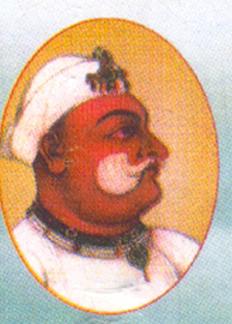The Jats - Their Role in the Mughal Empire/Appendix C
| Digitized & Wikified by: Laxman Burdak IFS (R) |
Page 271
One glaring defect in Badan Singh's character, as directly or indirectly pointed out by the chroniclers and also transmitted to us by the popular tradition was his sexual weakness. The fact of his ever expanding harem (serail), uncharacterisitc of a man of his caste and customs,1 also lends weightage to it. We learn that his harem consisted of extremely beautiful ladies each, "like a shining star" of all castes (Jats, Goree Rajput, Gujar and Ahir), some admitted by force while the rest by formal engagement. The number of inmates slowly rising touched a prodigious mark. While Wendel puts it at "150 if not more" Fransoo carries it to "nearly 400 Ranis as his wives".2 In spite of the assertion to the contrary by Fransoo the last figure very likely included concubines and maid-servants as well, as is alluded to by Harsukh Rai.3
Though more than 30 sons4 were born to Badan Singh, only 20 survived; the rest probably died in infancy. Out of his surviving sons those popular in history, besides the eldest Suraj Mal, included, Prata Singh, AKnai-Singh, Sobha Ram, Bhawani Singh, Balram, Sultan Singh, Ummed Singh; Devi Singh and Lal Singh.5 All of his sons, except Suraj Mal and Pratap Singh who helped their father at Deeg were made heads of villages.6 Of these 18 sons, the descendants of 16 holding Watan jagirs, were known as Thakurs of "Salah Kotaries (sixteen houses" while Pratap Singh with the title of "Raja" was later granted Wair7 and Suraj Mal succeeded his father at Bharatpur. The number of his daughters was not less than that of his
I. Memoires des Jats (Fr. Ms.) 20, also 21 and 28.
2. Memoires des Jats (Fr. Ms.) 20; Tawarikh-i-Hunud (Pers. Ms.) 19a.
3. Majma-ul-Akhbar in Elliot, VIII, 361-362.
4. Memoires des Jats (Fr. Ms.) 20; Somnath (Dirgh, Hindi Ms. 4 and Madhav Vinod in Somnath, 318) speaks of "numerous sons", but like Wendel refers to Suraj Mal and Pratap Singh only.
5. Tawarikh-i-Hunud (Per. Ms.) 19a; Sujan, 5-6; Majma-ul-Akhbar in Elliot VIII, 362; Also see Ganga Singh, I I Off.
6. Memoires des Jats, (Fr. Ms.), 21.
7. Settlement Report quoted by Ganga Singh, 111-112.
Page 272
sons. But Badan Singh put them to death fearing lest the Mughal Emperors should demand them as they previously did in case of the Rajputs.8
It was commonly believed that in consequence of a large number of his offsprings coupled with a deterioration in his eyesight, Badan Singh found it difficult to recognize his children unless whoever called on him, did not declare the name, age and residing Place of his mother.9
8. Tawarikh-i-Hunud (Pers. Ms.), 19a; Also see Memoires des Jats (Fr. Ms.) 20.
9. Memoires des Jats (Pers. Ms.) 21; Majma-ul-Akhbar in Elliot, Vlll, 362.
